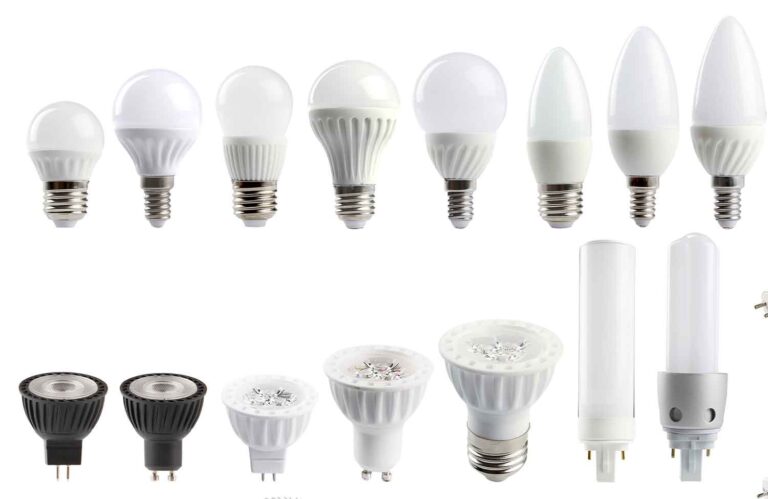Can LED Lights Be on a Dimmer Switch?
Dimmable lighting is a simple and effective way to set the ambience of a room. With a dimmer switch, you’re able to adjust the brightness of your lighting as you please. Dimmability is a feature that incandescent lighting can accommodate; but, with the rise in popularity of LEDs, you may wonder whether these new bulbs offer the same compatibility with dimmer switches.
LED lights can be on a dimmer switch, providing that both the bulbs are dimmable and the switch is LED-compatible. Otherwise, using non-dimmable LED bulbs, a non-LED-compatible dimmer switch, or both, will most likely leave you with functionality issues. For reference, you must use a trailing edge dimmer switch with compatible dimmable LED bulbs. Ensuring all components of the dimmable fixture are compatible with each other is the only way to guarantee functionality; this is also essential in order to prolong the lifespan of your bulbs.
What Are the Different Types of Dimmer Switches?
The two most common types of household dimmer switches are ‘leading edge dimmers’ and ‘trailing edge dimmers’. These dimmer switches differ in their wattage range, making them compatible with different types of bulbs.
- Leading Edge Dimmers: Leading edge dimmers are the conventional type of dimmer switch and are most common in homes. They were originally designed to work with incandescent bulbs; these bulbs use more energy, making them high-wattage, so leading edge dimmers have a higher wattage range to accommodate this.
- Trailing Edge Dimmers: Trailing edge dimmers are less common as they’re the newer form of dimmer switch on the market. These dimmer switches are specifically designed for use with LED bulbs and lighting fixtures; LEDs use relatively minimal energy, so trailing edge dimmers have a lower wattage range to read and control them effectively.
The issue with using a conventional leading edge dimmer switch with LED bulbs comes from the discrepancy in their wattages. Leading edge dimmers have a wider wattage range, whereas LED bulbs use a small amount of wattage. Consequently, leading edge dimmers are unable to properly read and control the circuitry of the LEDs.

Can I Use an LED Bulb with My Current Dimmer Switch?
Whether you can use an LED bulb with your current dimmer switch will depend on what type of switch it is. Your dimmer switch will only be compatible with dimmable LED bulbs if it’s the newer type, i.e. a trailing edge dimmer. Older leading edge dimmer switches will not be compatible with dimmable LED bulbs.
Unfortunately, any current dimmer switches in your home that work with incandescent bulbs are unlikely to be trailing edge dimmers. This will be the case for most unless your home is a contemporary new build or has been recently renovated. The easiest way to check whether your dimmers are LED-compatible is by referring to the user manual; the specs for some leading edge dimmer switches may state that it’s possible to use them with LEDs.
However, take note that you can still experience functional difficulties with these older switches, even if the manual claims compatibility. It’s best to install trailing edge dimmers along with your LED bulbs to avoid any potential compatibility issues.
Do You Need Special LED Bulbs for Dimmable Fixtures?
Yes, in dimmable fixtures, you need to use LED bulbs that are specifically designed for dimmability. Using regular LED bulbs in a dimmable fixture is possible, but doing so will likely leave you with poor functionality. This can also shorten the lifespan of bulbs not intended for use in dimmable fixtures.
The difference between regular and dimmable LED bulbs lies in their internal circuitry. Regular bulbs are only designed to either be fully on or fully off; as such, their circuitry is unable to effectively respond to the variating current levels that come from a dimmer switch. Dimmable LEDs, on the other hand, contain specialised circuitry that allows the bulb to respond to these pulsing current waves. The result is a bulb that dims properly according to the signals it receives from an LED-compatible dimmer switch.
What Happens if You Use Incompatible Dimming Components?
Using an incompatible switch with LEDs can lead to issues like flickering and the inability to dim the lights properly. Vice versa, these problems can also arise if you use non-dimmable LED bulbs with a dimmer switch. To avoid these issues, it’s essential that both the bulbs and dimmer switches are suitable for dimmable LED fixtures.
A full list of the potential problems from using incompatible dimming components is as follows:
- Flickering: The discrepancies between the wattage of the bulb and the dimmer switch can lead to the light flickering. Flickering lights are uncomfortable for anyone, but particularly so for individuals with photosensitive epilepsy.
- Buzzing Noise from Switch: Hearing an audible buzzing noise from your dimmer switch or lighting fixture is a sign of incompatible components. You may also hear buzzing if you overload the switch or use a cheap, poorly-manufactured dimmer.
- Poor Response to Dimmer Switch: The light may not respond as it should when you adjust the dimmer switch. You will either notice that the light output doesn’t change upon turning the switch, or that the brightness mismatches with the switch’s setting.
- Sudden Changes in Light Output: The light may suddenly jump around in brightness regardless of the dimmer switch’s setting. You may experience the bulb suddenly lighting up or dropping off at random intervals during operation.
- Faint Light When Bulb is Off: An issue known as ‘ghosting’, you may notice that the bulb gives off a faint light even when switched off.
- Shortened Lifespan of Bulbs: Using an incompatible bulb or dimmer switch can ultimately shorten the lifespan of your bulbs. LED bulbs come with exceptional lifespans of up to 50,000 hours of use; however, using incompatible dimming components will cause the bulbs to prematurely deteriorate well before this.
To reiterate, the easiest way to find out whether your bulbs and dimmers are compatible is to refer to their specifications. If you don’t have a user manual, get in contact with the manufacturer of the components; they will be able to give you specific advice on what components you’ll need for your dimmable fixture.

Do Dimmer Switches Affect the Electricity Consumption of the Fixture?
Yes, dimmer switches have a direct impact on how much electricity a lighting fixture consumes. Using your lights on a dimmer setting lowers their brightness, thus reducing how much energy they draw during operation.
When you use a dimmer switch, the switch works to lower the bulb’s brightness by reducing its electrical input. This will reduce the overall amount of electricity the fixture draws per hour while it’s on. LED bulbs are already extremely energy efficient and don’t consume a lot of electricity, even on their brightest settings; so, with a dimmer switch, this power consumption can be reduced even further to an absolute minimum.
In some cases, the power consumption of the dimmer will be directly proportional to the LED’s brightness. To explain this with an example, dimming your lights to 50% would also reduce their power consumption to 50%. That means, by using your lights at half brightness, you can halve the amount of electricity they use; in turn, this will cut down the money you spend on running the lights in half too.
Checklist for Installing Dimmable LED Lights
To draw the information in this article together, follow this checklist when installing your dimmable LED lighting.
1. Dimmable LED Light Bulbs
Purchase dimmable LED bulbs that explicitly state their dimmability in their name or specs. You’ll find this information on the packaging for the bulbs or in their product description if purchasing online.
2. LED-Compatible Dimmer Switch
Ensure that you’re using an LED-compatible dimmer switch with your dimmable LED bulbs; this must be a trailing edge dimmer. It isn’t possible to tell what type of dimmer switches you currently have by eye; you’ll need to refer to the user manual for the switch or contact the manufacturer for this information. It’s unlikely that you will already have these dimmer switches unless your house is a new build or recently renovated.





